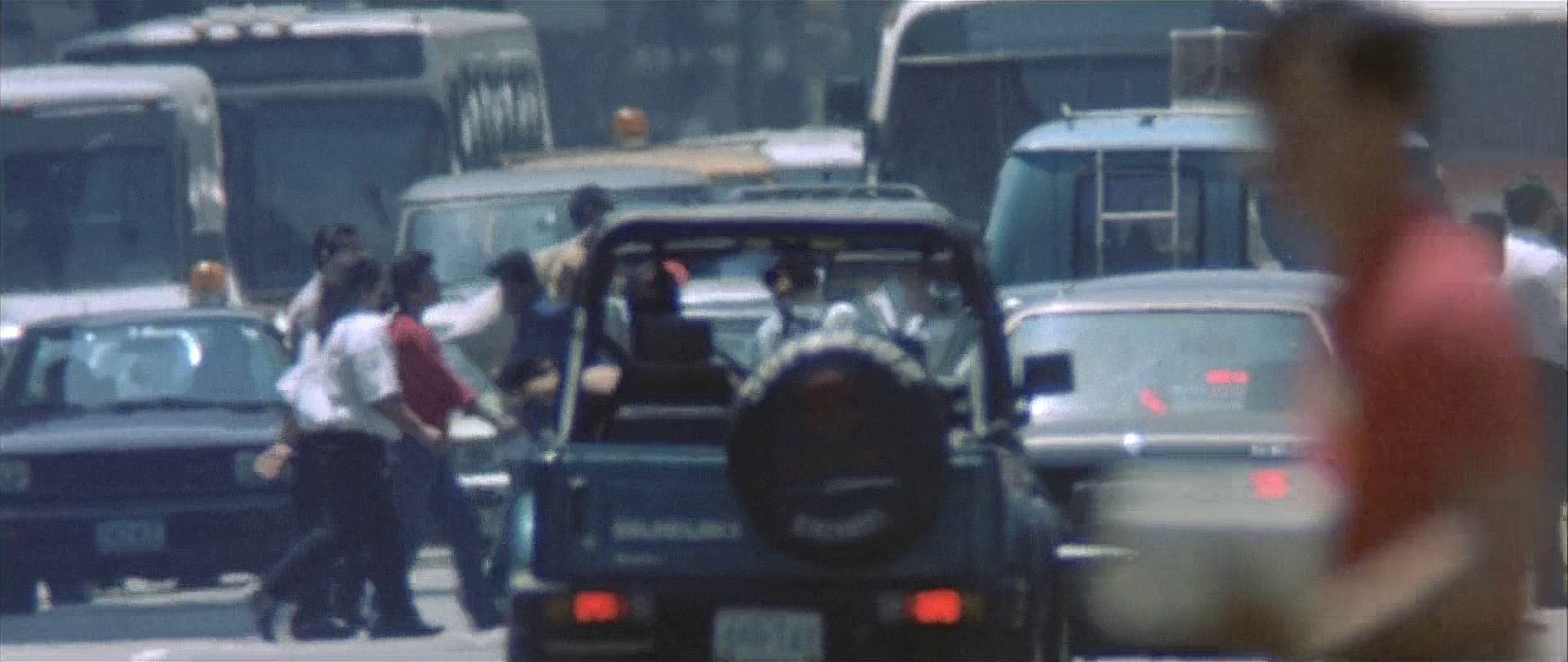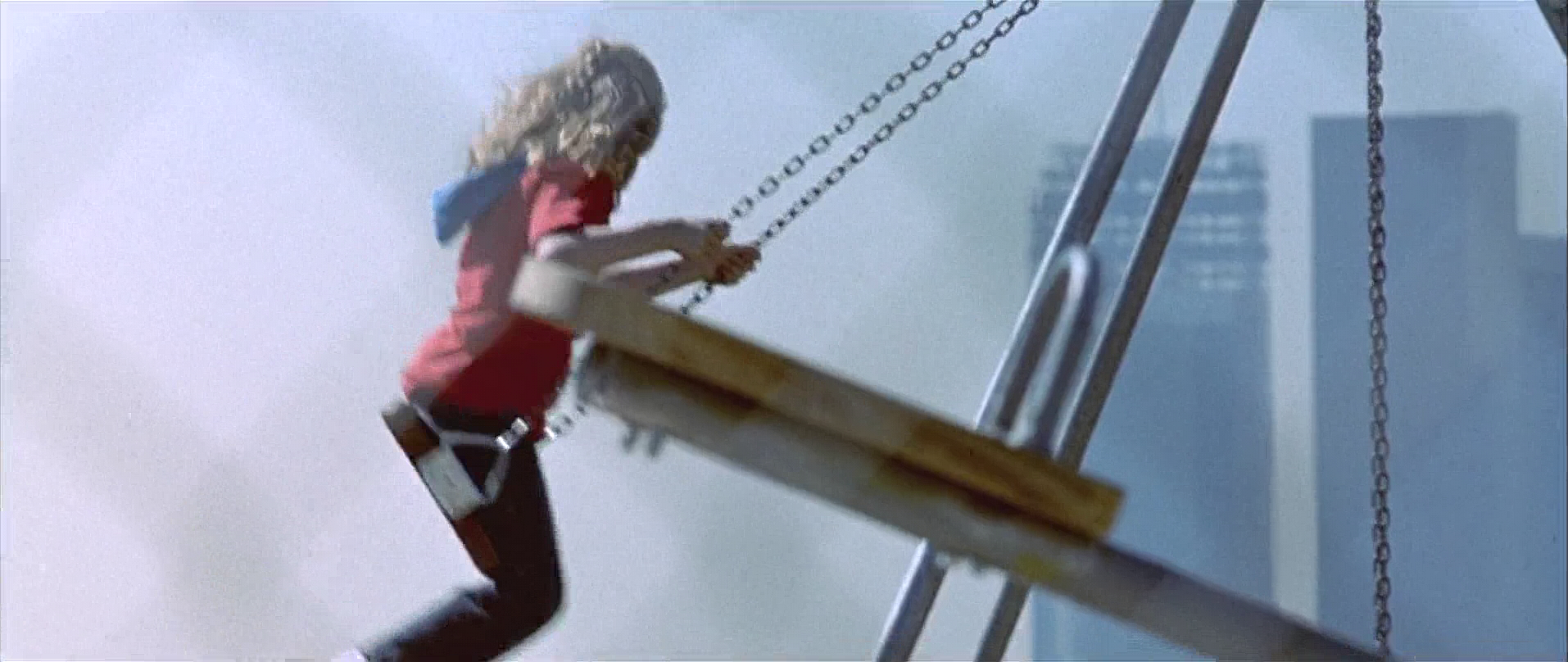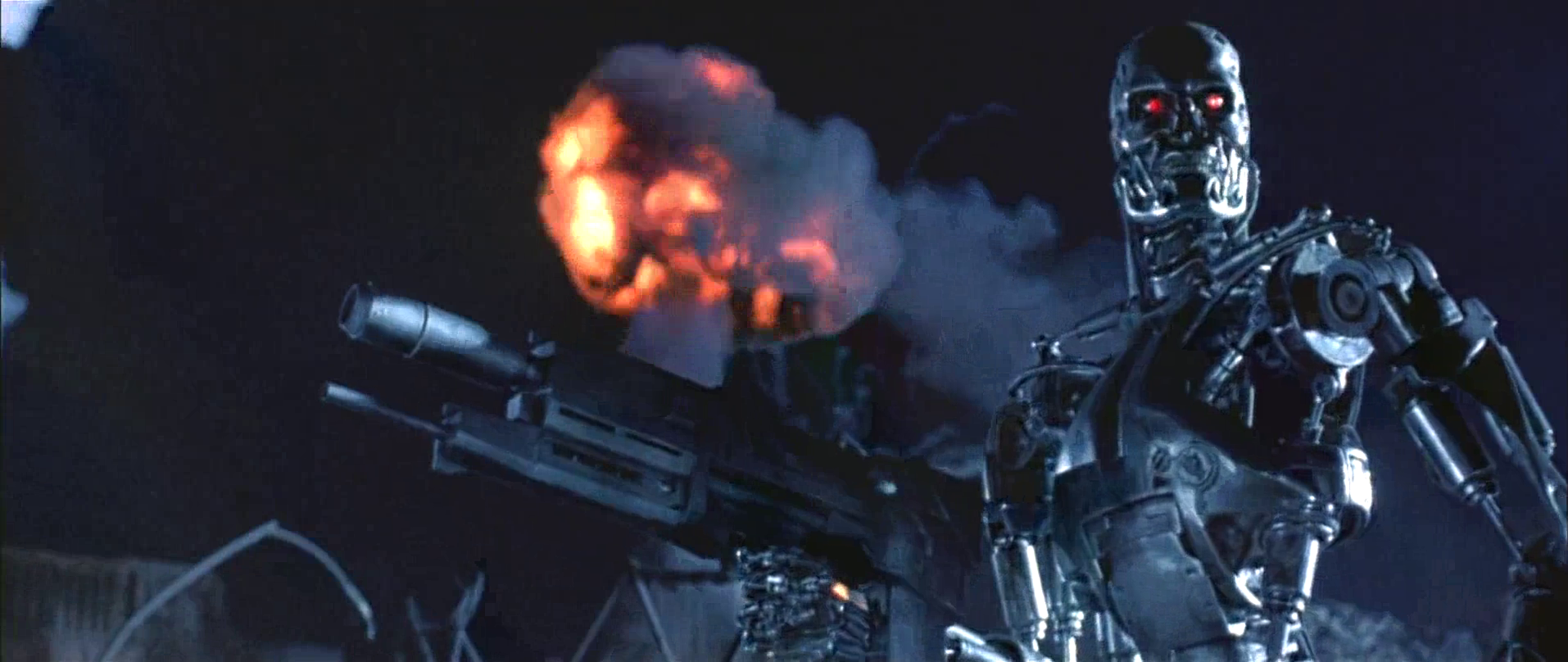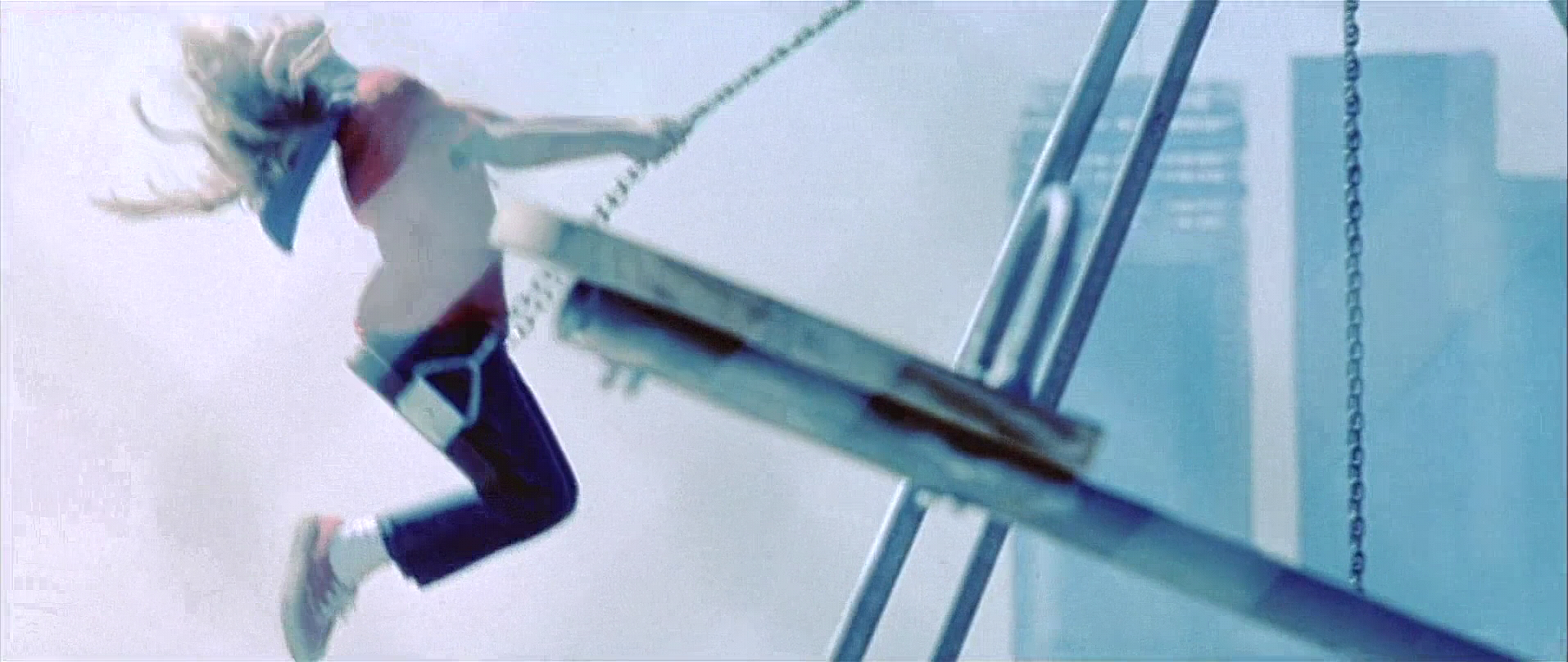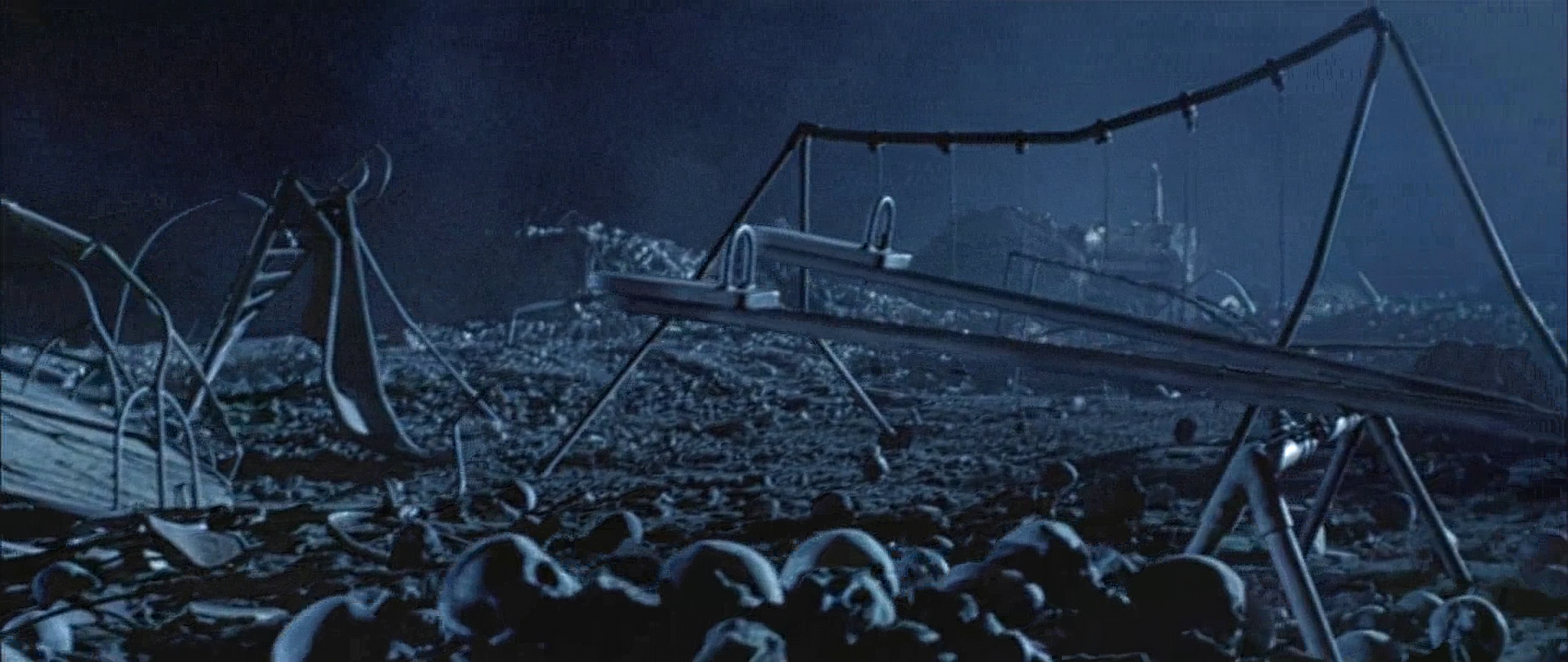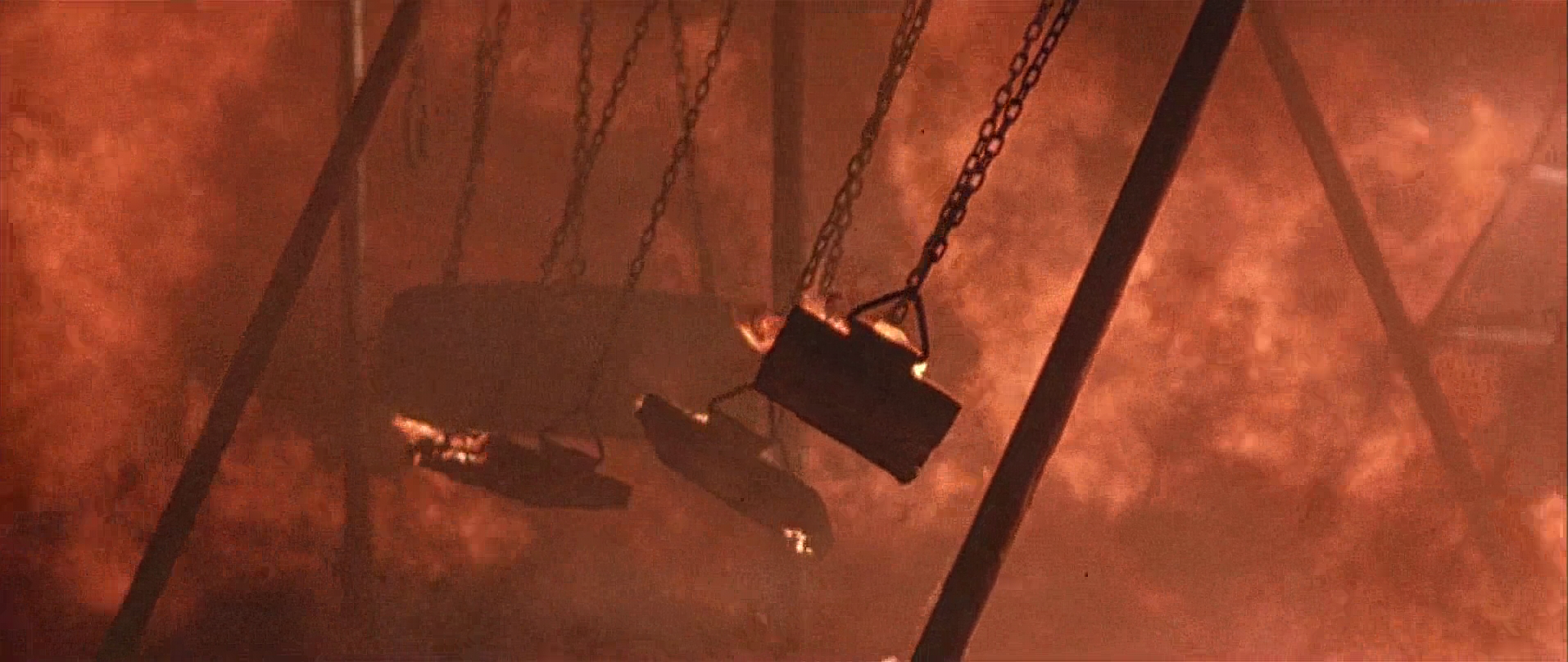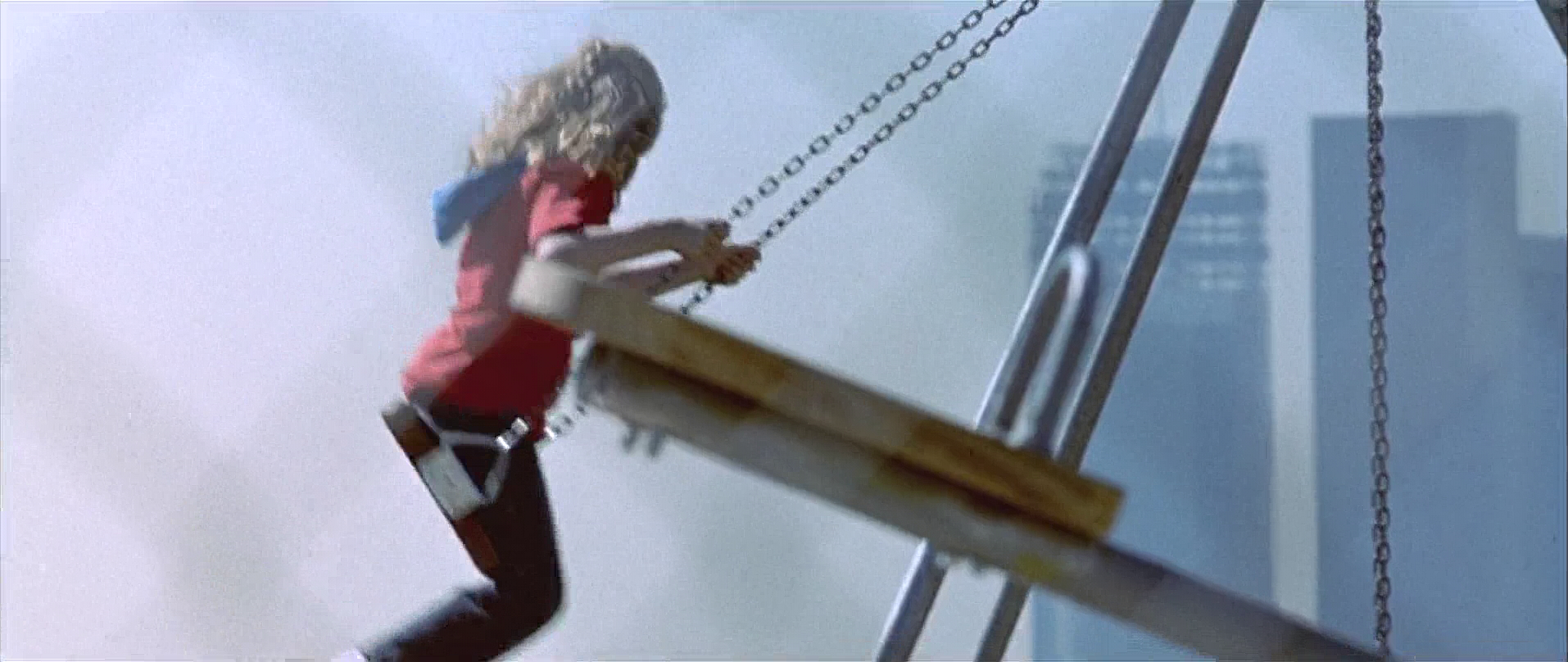It messes with your head
The complicated relationship between time and identity is demonstrated during T2’s opening:
We begin with a striking juxtaposition of images:
a bustling metropolis
a lively playground
a desolate wasteland filled with killer cyborgs
After the spectacular future war sequence, we return to the same playground for the opening credits. Repetition in this instance demonstrates clear intention. Comparing these 3 visits to the playground reveals an underlying meaning.
Polar opposites are used to great effect here – the laughter of children bleeds into a desolate wasteland. Then, upon our final return to the playground, we watch a familiar image in the throes of nuclear destruction.
Childhood imagery merges with fire, creating a biblical sense of doom. The animals no longer represent innocence, instead they are now the four horsemen of the apocalypse. The swings glide through the air in flames, evoking the pendulum-like connection between cause and effect. In addition, the merry-go-round is analogous to the wheel of time, turning inexorably as events unfold.
This opening contains within it a subtly demonstrated, but profoundly impactful idea. Appearance wise there is minimal change to the structure we see onscreen, but in terms of meaning, there is change of great magnitude.
What is even more indicative of deeper meaning, is the non-sequential depiction of the playground.
From a linear, (i.e. human) perspective, events should occur in this sequence:
However, what we see onscreen is a disruption of what is expected. At first the playground is filled with life. Then it is shown destroyed. The final time we see it, it is enveloped in the fires of Judgement Day.
The structure of the film as a whole echoes this idea – first we see the world in its current form (reflecting an early nineties Los Angeles), then we see the city once it has been destroyed. We then recount the transition from what was to what will be through multiple iterations – reflecting the battle between time and identity on a linear timeline.
This structure brings with it the implications of a much deeper concept. That a part, or a version of us, must die in order for us to grow and change.
“Time is like a river made up of the events which happen, and a violent stream; for as soon as the thing has been seen, it is carried away, and another comes in its place, and this will be carried away too.”
Marcus Aurelius
Change is a difficult concept to pin down, because while the vessel is the same, something is different.
This concept is exemplified in Sarah Connor.

